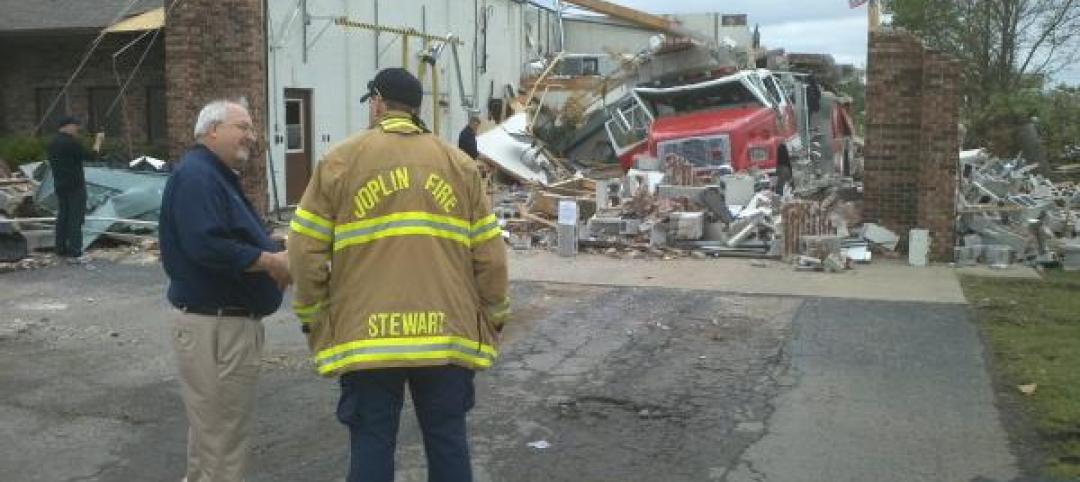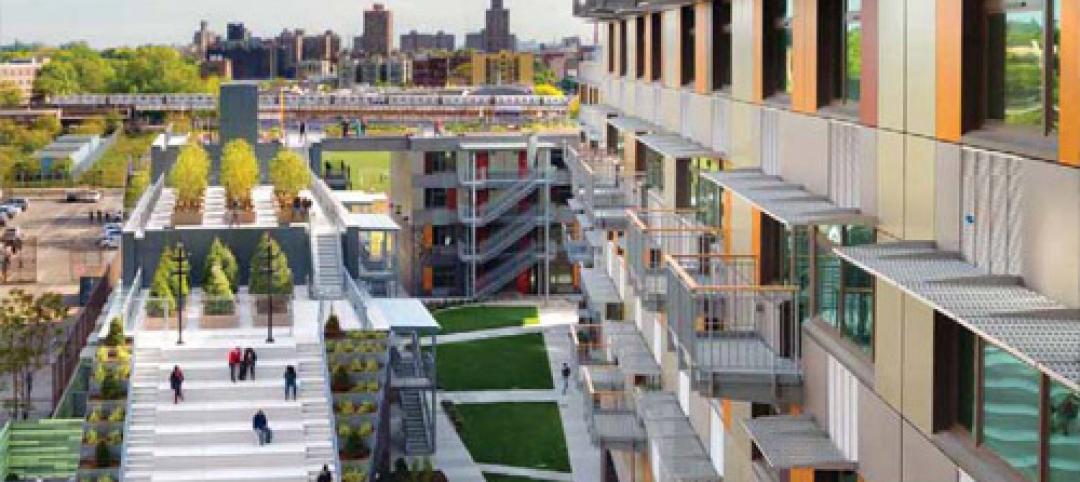Natural disasters that have devastated Puerto Rico over the past few years—at least 160,000 homes were destroyed by Hurricane Maria in September 2017, and another 30,000 were damaged by Hurricane Dorian last August, to say nothing of the damage caused by a 6.4-magnitude earthquake that shook the island last month—exposed the longstanding deficiencies in the commonwealth’s construction practices.
Close to half of Puerto Rico’s housing has been built—and continues to be built—“informally,” meaning that owners didn’t get permits, didn’t hire a licensed architect, and in all likelihood didn’t build to code.
With the island in need of between 60,000 and 90,000 new housing units by 2023, the question before Puerto Rico’s leaders and citizens is whether rebuilding and renovation will take safety and resilience more seriously.
“The problem is not the codes, which are equal or similar to what’s followed in the U.S.,” explains Ricardo Alvarez-Diaz, founder and chairman of Alvarez-Diaz & Villalón, the island’s largest architecture firm. He is also a member of the Construction Council of Puerto Rico. “The problem is the implementation of the codes and their enforcement.”
He says more rigorous enforcement will require a change in cultural mindset among the island’s residents for whom “informal” construction has been a way of life, and a girding of political will among politicians who too often turn a blind eye to illegal construction every election cycle.
The situation in Puerto Rico is complicated by many factors, not the least of which being that the laws mandate that licensed architects and contractors take full responsibility for code enforcement. But because Puerto Rican contractors don’t need licenses to operate, the onus of code enforcement falls squarely on the architects, whose liability insurance premiums are second only to doctors', says Alvarez-Diaz.
He notes, however, that there’s been a “big push” to require contractors to be licensed, which he believes could happen later this year.
Homeownership in Puerto Rico, at around 70%, is higher than in the U.S. But that ownership rate, says Alvarez-Diaz, is a double-edged sword because owners that have paid off their mortgages typically don’t carry insurance, or are less educated about the benefits of hiring professionals for rebuilding or remodeling.
What’s changing the island’s attitudes about following building codes, however, have been mandates by the Federal Emergency Management Administration (FEMA), and the U.S. Department of Housing and Urban Development (HUD) that federal funding for rebuilding is contingent on more rigorous code enforcement.
This is nothing new: FEMA and HUD imposed similar requirements after Hurricane Andrew wiped out parts of Florida in 1992 and exposed shoddy construction and, in some markets, nonexistent code enforcement.
Puerto Rico desperately needs the U.S. government’s money. A few years back the island’s Governor’s office estimated that rebuilding what Hurricane Maria destroyed would cost at least $31 billion, well beyond the means of a financially precarious commonwealth whose poverty rate hovers around 44%.
Currently, the government evaluates properties to determine whether they are worth rebuilding or if their residents need to relocate. And one of the criteria for those determinations is whether the building is in an existing flood plain. “FEMA has made it clear, as has the government, about not wanting to rebuild in flood plains,” says Alvarez-Diaz. HUD’s CDBG-DR funding allow for building above flood plain levels, but the ultimate decision lies with Puerto Rico’s Housing Authority.
Alvarez-Diaz cites estimates that more than 73,000 housing units, out of the 250,000 affected by recent storms, might need to be moved to higher ground, and that only about 35,000 units are in good enough condition to be rebuilt or elevated.
So what’s the alternative? One solution could be urban densification. Alvarez-Diaz says that only recently have Puerto Ricans become more receptive to renting as opposed to owning. That change of heart might also be motivated by the government issuing Section 8 vouchers that can be used for rental housing.
Bayshore Villas is a mixed-use complex that offers 170 rental apartments that range in size from 600 to 1400 sf.
For the past several years, Alvarez-Diaz’s firm has been trying to bring more affordable rental housing to the island. Its first big project was Renaissance Square, a 170-unit building that is Puerto Rico’s first mixed-income public housing development, and the island’s first Energy Star-rated project. Renaissance Square was approved in 2014, started in 2017, delayed by the storms, and completed last year.
Alvarez-Diaz & Villalón has two similar projects on the island. Bayshore Villas, located on the former Puerta de Tierra public housing project near Old San Juan, offers 174 rental units ranging from 600 to 1,400 sf, more than 5,800 sf of commercial space, and 6,000 sf for community and administrative uses. Last May, construction began on the Jose Gautier Benitez development in Caguas, P.R. This 21-acre development is divided into six residential blocks, and will include 438 one- and two-bedroom apartments as well as a five-story elderly housing facility. This building should be completed next year.
Alvarez-Diaz says the success of Renaissance Square has gotten his firm work in Texas, Florida, and the Virgin Islands.
Related Stories
| Jun 19, 2013
New York City considers new construction standards for hospitals, multifamily buildings
Mayor Michael Bloomberg’s administration has proposed new building codes for hospitals and multifamily dwellings in New York City to help them be more resilient in the event of severe weather resulting from climate change.
| Jun 17, 2013
DOE launches database on energy performance of 60,000 buildings
The Energy Department today launched a new Buildings Performance Database, the largest free, publicly available database of residential and commercial building energy performance information.
| Jun 13, 2013
AIA partners with industry groups to launch $30,000 'Designing Recovery' design competition
The program will award a total of $30,000 to three winning designs, divided equally between three locations: Joplin, Mo., New Orleans, and New York.
| Jun 12, 2013
5 building projects that put the 'team' in teamwork
The winners of the 2013 Building Team Awards show that great buildings cannot be built without the successful collaboration of the Building Team.
| Jun 11, 2013
Vertical urban campus fills a tall order [2013 Building Team Award winner]
Roosevelt University builds a 32-story tower to satisfy students’ needs for housing, instruction, and recreation.
| Jun 11, 2013
Finnish elevator technology could facilitate supertall building design
KONE Corporation has announced a new elevator technology that could make it possible for supertall buildings to reach new heights by eliminating several problems of existing elevator technology. The firm's new UltraRope hoisting system uses a rope with a carbon-fiber core and high-friction coating, rather than conventional steel rope.
| Jun 5, 2013
USGBC: Free LEED certification for projects in new markets
In an effort to accelerate sustainable development around the world, the U.S. Green Building Council is offering free LEED certification to the first projects to certify in the 112 countries where LEED has yet to take root.
| Jun 4, 2013
SOM research project examines viability of timber-framed skyscraper
In a report released today, Skidmore, Owings & Merrill discussed the results of the Timber Tower Research Project: an examination of whether a viable 400-ft, 42-story building could be created with timber framing. The structural type could reduce the carbon footprint of tall buildings by up to 75%.
| Jun 3, 2013
6 residential projects named 'best in housing design' by AIA
The Via Verde mixed-use development in Bronx, N.Y., and a student housing complex in Seattle are among the winners of AIA's 2013 Housing Awards.
| Jun 3, 2013
Construction spending inches upward in April
The U.S. Census Bureau of the Department of Commerce announced today that construction spending during April 2013 was estimated at a seasonally adjusted annual rate of $860.8 billion, 0.4 percent above the revised March estimate of $857.7 billion.
















